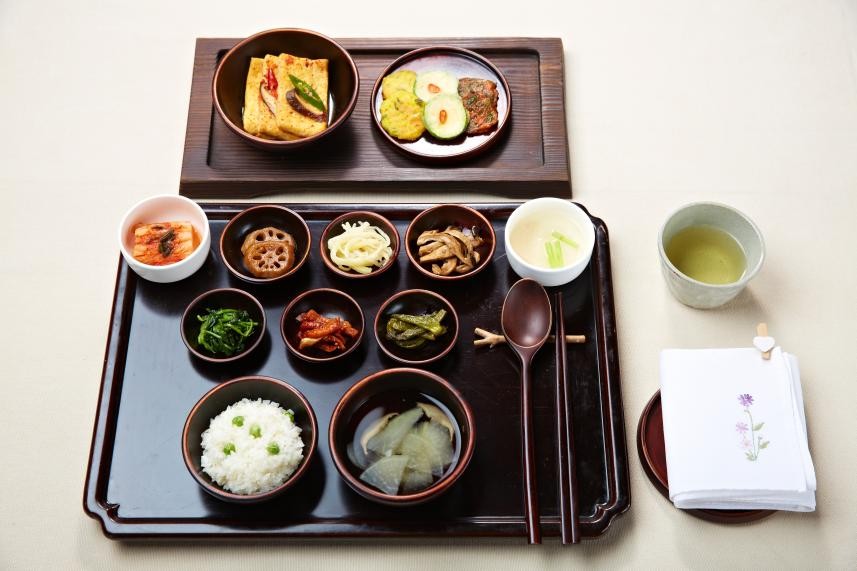
Buddhist temple food has been designated National Intangible Cultural Heritage. Shown is a meal at Jingwansa Temple in Seoul's Eunpyeong-gu District. (Cultural Corps of Korean Buddhism)
By Aisylu Akhmetzianova
The Korea Heritage Service (KHS) on May 19 announced the designation of Buddhist temple food as National Intangible Cultural Heritage for reflecting the Buddhist spirit.
Such food refers to the traditional diet representing daily monastic practices and food offerings. Based on Buddhist precepts, the food is vegetarian and excludes meat, fish or oshinchae, or the five forbidden vegetables of garlic, green onions, chives, Korean wild chives and heunggeo, a type of leek.
Since Buddhism's spread in the country, temple food has been developed for centuries by influencing and being influenced by Hansik (traditional cuisine) culture.
Records of temple food date back to the Goryeo Dynasty (918-1392), with mentions of items like vegetarian dumplings and mountain leaf mustard kimchi contained in literature from the period like Dongguk Yi Sangguk Jip (Collected Works of Minister Yi of Korea), written in 1241 by Goryeo scholar Yi Kyu-bo.
During the Joseon Dynasty (1392-1910), temples were the main providers of fermented food such as tofu, meju (soybean lumps) and jang, or traditional sauces and pastes made from fermented soybeans and interacted with laypeople through activities like grain exchanges with aristocratic families.
"This distinct food culture was created based on the Buddhist principle of not killing living things and the philosophical values of respect for life and moderation," the KHS said. "Such food has maintained traditional recipes in contributing to cultural diversity and creativity."
"The recipes for temple food differ by temple, so it was designated a communal food that does not recognize a specific individual or group."
aisylu@korea.kr